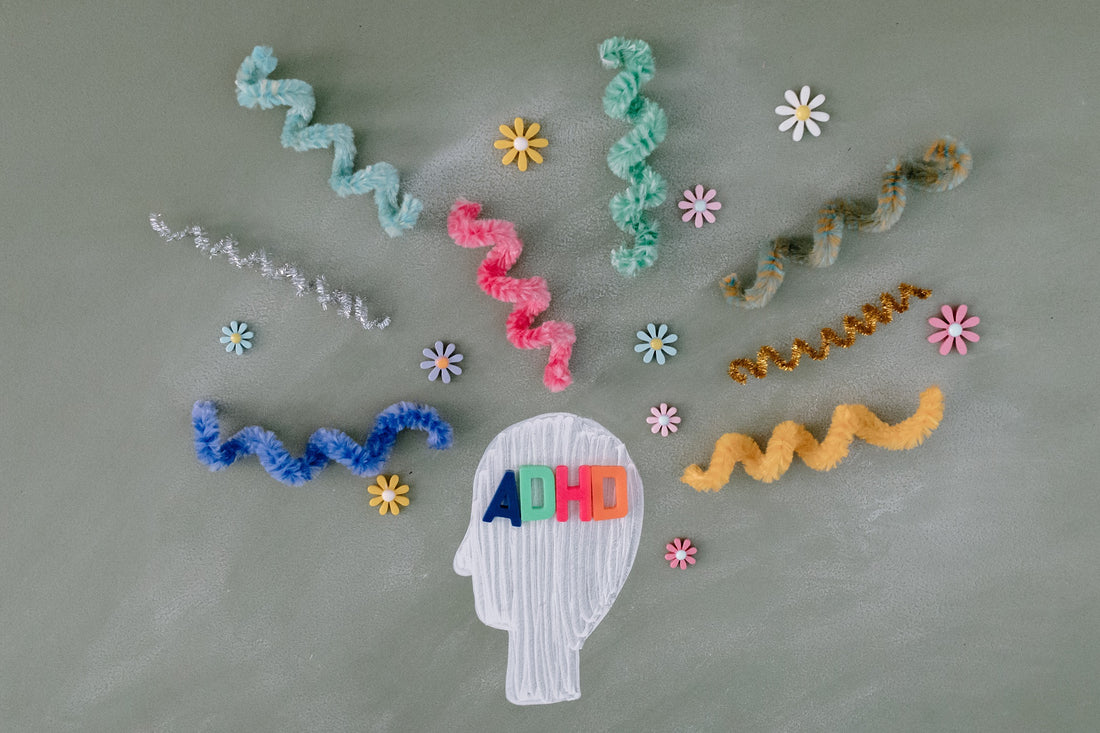
5 Personality Traits of ADHD Children & How Fidget Toys Can Help
Desiree RasShare
The line between a personality trait and an ADHD symptom can be blurry at times. But how can we differentiate fact from fiction, and how can fidget toys help? A personality trait refers to how people act in general. How their thoughts, feelings, and behaviors flow within a specific pattern. Being calm or emotional during times of crisis, or being introverted or extroverted, can be considered a personality trait. The most prominent symptoms of ADHD are inattention and hyperactive-impulsive behavior. These symptoms can start before the age of twelve and can last well into adulthood but can be noticed and diagnosed as early as the age of three.
The ADHD subtypes
What are the five most prominent personality traits?
A simple way to remember it is with the acronym OCEAN.O is for Openness.
This trait includes qualities such as inventiveness and insight. Children with a high level of openness are interested in many things. They are inquisitive about society and the world, and they are open to learning new things and having new experiences. People who score low on this feature are more opposed to discovering new things and may find it difficult with abstract concepts.

C is for conscientiousness.
We associate this characteristic with high levels of thinking, strong self-control, and goal-directed activities. Very conscientious people are often structured. They prepare ahead of time, keep their actions' influence on others in mind, and keep well to deadlines.
E is for Extraversion
Excitability, friendliness, talkativeness, assertiveness, and a high emotional expressiveness describe extraversion (or extroversion). Extraverted people are gregarious and highly social. They feel more energetic and thrilled when they are with other children.
Children with low extraversion are more introverted and have less ability to engage in social situations. Social gatherings can become tiring, and introverts frequently look for time to "recharge."
A is for Agreeableness
Trust, altruism, friendliness, love, and other prosocial acts are examples of traits of this characteristic. Children with a high level of agreeableness are more cooperative than children with a low level of agreeableness can be competitive and manipulative.
N is for Neuroticism
Sadness, mood swings, and erratic behavior are characteristics of neuroticism. Kids with high levels of this feature are prone to mood swings, anxiety, impatience, and sorrow. Those with low levels of this attribute are calmer and emotionally stable.
ADHD can be present within these personality traits but can also be misdiagnosed because of the largeness of the personality trait and can mask ADHD well. As Dr. Desiree Murray states, "I think that again if what a parent sees in their child is causing problems for the child, causing problems at school or home, with friends, then it is worth considering whether there is a medical cause like ADHD."
How can fidget toys help?
Fidget toys may not address all of your difficulties with your hyperactive and highly distracted youngster. Still, ADHD fidget toys may relieve tension and energy and assist your child study better.Calming Toys.
Many ADHD kids are bombarded by the emotions and thoughts that push them in all directions, such as those within the 'N' archetype. Calming toys help children relax and focus by releasing stress and energy with soothing fidget toys. The Stop n Pop fidget pad, Color Chameleon Stress Balls, or The Super Sensory Stress Ball are examples of ADHD fidget toys that can help you relax.
Toys for Feeling and Learning
Because many children with ADHD learn best via feeling, fidget toys that emphasize sensory stimuli provide a terrific way to burn off energy. These toys are perfect for kids and adults who identify within the 'O' or the 'E' parts of the OCEAN acronym. Tactile ADHD fidget toys are an excellent outlet for children who require sensory touch.
Sensory Pipes that may be placed on a child's desk, sensory strings, and Silly Suckers are among the best tactile ADHD fidget toys.
Toys for Focus
Fidget toys are much more than simply a fun method for your child to relieve stress. Fidget toys are also shown to improve focus and attention, which indicates that fidget toys can aid boost alertness and concentration in a school context.Consider fidget toys like the Fidget Tri-Pad or Stretchy Strings to improve your child's concentration if they are part of the 'C' archetype.
Toys with Resistance
Some kids desire to feel and touch things and push and pull against a resisting force. Simple hand gestures against slight resistance can help with energy release and a goal to focus on. Try resistant ADHD fidget toys for kids who require more than simply sensory stimulation, such as those within the 'N' and 'A' archetypes.Super Sensory Stretchy Strings or Stress Ball are examples of fidget toys that create resistance. Resistance rings and rubber bands are two more fundamental solutions to explore.
Managing ADHD within a broad spectrum of environments can be tiring, and parents might feel like part of a battle in keeping the ADHD symptoms in check. Fidget toys can be highly effective in managing ADHD because of their environmental versatility. Grab some silly strings and see how they work with your child in conjunction with your ADHD management plan.
